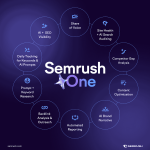Imagine you have a groundbreaking idea for an app. It could revolutionize the way people interact with technology, enhance day-to-day efficiency, or even entertain millions across the globe.
Yet, there’s just one hitch—you don’t know how to code. This would have been a formidable barrier not long ago, but today, no-code platforms have changed the game. These tools empower you, the visionary, to bring your ideas to life without needing to write a single line of code.
No-code platforms offer a range of functionalities that simplify the app development process. They provide intuitive drag-and-drop interfaces, pre-built templates, and various customization options.
This means you can design, build, and launch your application much faster than through traditional coding. Not limited to mere simple tasks, these platforms are sophisticated enough to handle complex workflows, ensuring that your creative vision doesn’t have to be compromised due to technical limitations.
Choosing the Right Platform for Your Project
While Bubble is a well-known player in the no-code market, several alternatives might more closely align with your specific project needs. Exploring Bubble alternatives is essential to finding the tool that best fits your requirements. Each platform has its unique strengths, whether enhanced design capabilities, stronger integration options, or more favorable pricing structures.
A few platforms are known for their ability to build applications that feel truly native to mobile devices. Others offer robust development options for more complex applications and are highly scalable. Meanwhile, many platforms can help you transform spreadsheets into beautiful, functional applications in just minutes.
By assessing each platform’s features against your project’s needs—such as the need for real-time data operations, user authentication, or API integrations—you can select a no-code tool that not only makes app development accessible but also powerful.
Integrating Advanced Features and Customization
One of the most exciting aspects of no-code platforms is their ability to integrate advanced features without needing you to understand the backend coding that powers them.
For example, if you want to include features like push notifications, GPS-based services, or even artificial intelligence in your app, many no-code platforms offer these as add-ons or built-in capabilities.
Furthermore, customization is a breeze. Want to match your app’s design to your brand’s color scheme? No problem. Need to adjust the layout for a better user experience? That’s just a few clicks away.
The best no-code platforms provide extensive design tools that make your app functional and visually appealing. These features ensure that your app can stand out in the competitive market and provide an engaging user experience.
Collaborating and Scaling with Confidence
Another significant benefit of using no-code platforms is the ease of collaboration they facilitate. These tools often support multiple users and roles, allowing team members to work on the project simultaneously, regardless of their physical location.
Everyone can contribute, whether a designer adjusts the UI, a marketer sets up user analytics, or a project manager organizes the workflow. This collaboration can vastly improve the quality of your final product and speed up its development.
Moreover, as your app gains traction, you might worry about scaling. The best no-code platforms are designed with scalability in mind, allowing you to increase your user base and app complexity without a hitch.
They manage the backend infrastructure so that you can focus on enhancing features, expanding your market reach, and growing your user base without the constant worry about system crashes or slowdowns.
Conclusion
The advent of no-code platforms has profoundly transformed app development, making it accessible for innovators like you to turn ideas into reality without technical hurdles.
By choosing the right platform, integrating advanced features, and leveraging collaborative tools, you can develop applications that are not only functional but also scalable and visually impressive.
Lynn Martelli is an editor at Readability. She received her MFA in Creative Writing from Antioch University and has worked as an editor for over 10 years. Lynn has edited a wide variety of books, including fiction, non-fiction, memoirs, and more. In her free time, Lynn enjoys reading, writing, and spending time with her family and friends.















